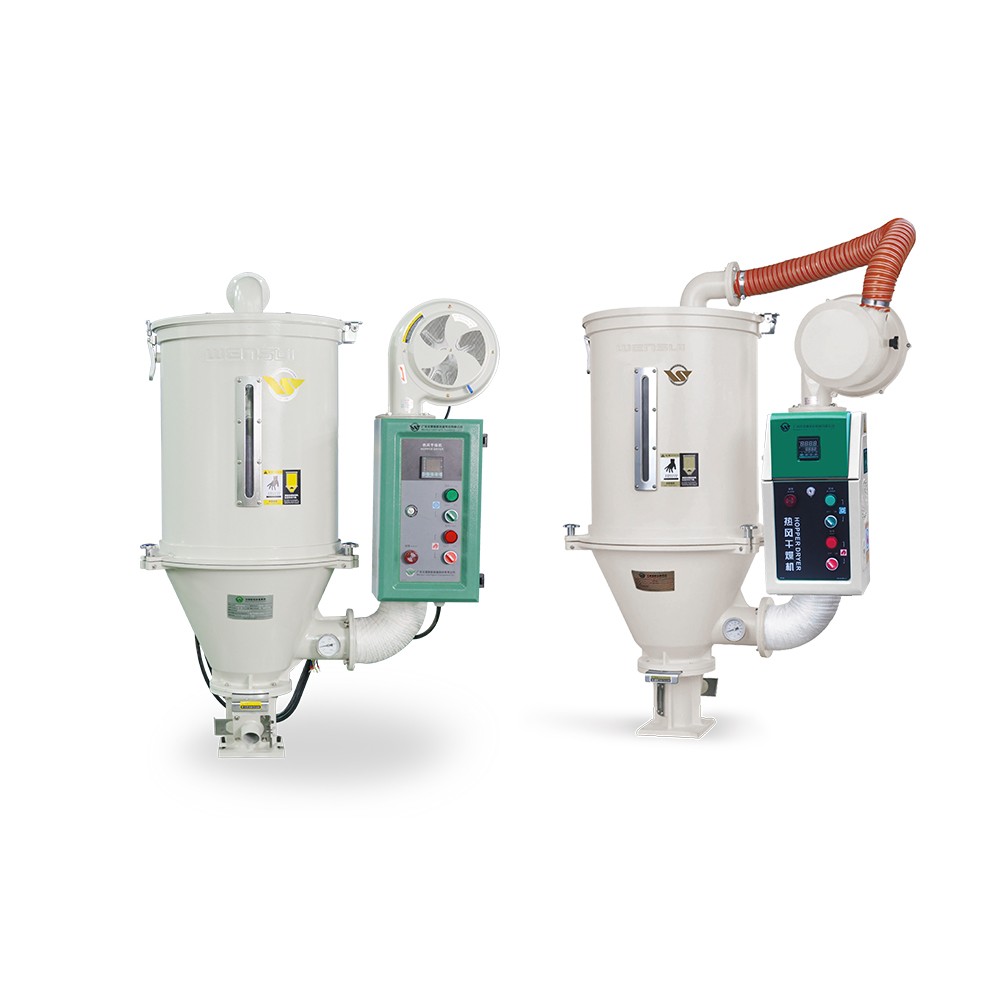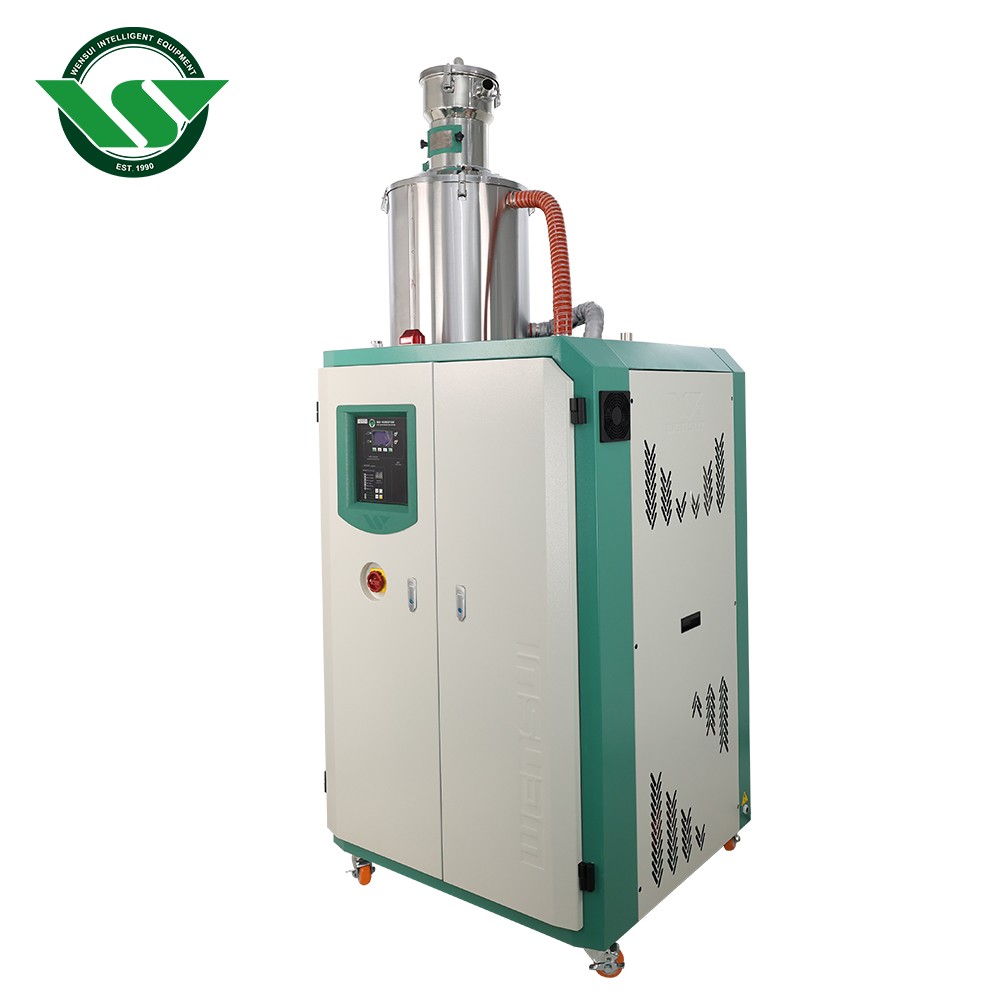Understanding the Difference: Dehumidification Dryer vs Standard Dryer
2023-12-14 Page view:
Dehumidification dryers, vital in industrial settings, specifically target materials with high moisture absorption to ensure optimal product molding rates. Historically, industries relied on conventional hot air blowers, facing challenges during humid weather that hindered the drying process. To address these limitations, manufacturers like Wensui group developed dehumidification dryers and make it better. Let's explore the distinctions between dehumidification dryers and regular standard hopper dryer.
Standard Dryer Overview:

Standard dryers utilize electrically heated hot air to evaporate material moisture. However, varying air moisture content due to climate fluctuations affects drying efficiency.
In traditional dryers, the incoming air's moisture level, especially in humid climates, impedes effective material drying.Therefore, more and more factories need more sophisticated
equipment to improve efficiency. The market for dehumidification dryers has since opened
Dehumidification Dryer:

Dehumidification dryers overcome standard dryer limitations by drawing in ambient air to extract moisture at a low dew point. The dried air is then heated and directed to dry materials.
This method significantly enhances work efficiency, reduces drying duration, and ensures superior drying outcomes.
Dehumidification dryers employ closed-loop air pipelines unaffected by external climates. Whether dry or humid, they ensure thorough material drying without moisture interference.
Equipped with filters, these dryers prevent dust leakage, maintaining a clean factory environment.
Understanding Dew Point and Drying Efficiency:
Dew point temperature represents the temperature at which gas moisture condenses into water droplets upon cooling. For optimal performance, an excellent dehumidification dryer
achieves a dew point as low as -40°C.
Drying time refers to pre-molding material drying duration, crucial for maintaining material quality and conserving energy. PC requires approximately 3-4 hours, while ABS needs a
similar duration.
Air volume, critical for moisture removal, directly impacts dehumidification efficiency. Optimal air volume ensures complete moisture extraction without overheating or insufficient drying.
Key Benefits of Dehumidification Dryers:

1:Elimination of bubbles, ensuring product mechanical, electrical, and dimensional stability.
2:Reduced drying time, conserving labor and resources.
3:Prevention of defective products, minimizing return losses and waste.
4:Closed-circuit air systems with filters, impervious to external climates, maintaining a pollution-free workplace.
Drying Efficiency Determinants: Drying temperature, dew point, drying time, and air volume are crucial factors intertwined to impact drying efficiency. Any alteration in these conditions
can significantly affect the drying process.
So we need to choose Dehumidification dryers or standard dryer according to our own needs



